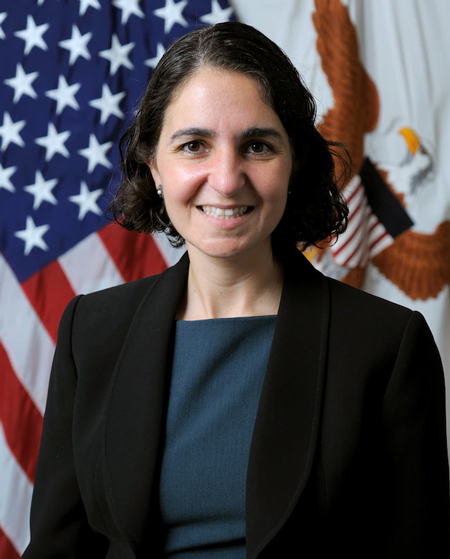Sitting Down with Mara Karlin
Fall 2024 Mara Karlin recently returned to Johns Hopkins SAIS as Professor of Practice, Interim Director of the Foreign Policy Institute, and Faculty Co-Lead for Security, Strategy, and Statecraft. An alumna with an M.A. and a PhD in Strategic Studies from SAIS, Karlin held several positions at SAIS from 2007 to 2021: adjunct professor, associate professor, and director of Strategic Studies.
Mara Karlin recently returned to Johns Hopkins SAIS as Professor of Practice, Interim Director of the Foreign Policy Institute, and Faculty Co-Lead for Security, Strategy, and Statecraft. An alumna with an M.A. and a PhD in Strategic Studies from SAIS, Karlin held several positions at SAIS from 2007 to 2021: adjunct professor, associate professor, and director of Strategic Studies.
Karlin subsequently served in various national security positions for six United States secretaries of defense, advising on policies spanning strategic planning, defense budgeting, the future of conflict, and regional affairs involving the Middle East, Europe, and Asia. Most recently, she served as Assistant Secretary of Defense for Strategy, Plans, and Capabilities, leading the development and implementation of the 2022 National Defense Strategy, Nuclear Posture Review, and Missile Defense Review—the first time all major strategies were conducted simultaneously.
In this interview, Karlin discusses, among other issues, her experience at top levels in the U.S. Department of Defense, the most pressing national security challenges facing the United States, and how SAIS students can get involved in key policy roles.
You have been part of the SAIS community for many years, both as a student and a faculty member. Now that you have returned to SAIS as faculty member and interim director of the Foreign Policy Institute, what are you looking forward to accomplishing?
I’m excited to return to the classroom and learn from SAIS students about how they are thinking about the shifting security environment and, just as importantly, their role in shaping it. My research will focus on understanding lessons learned about the changing character of war from current conflicts in Europe and the Middle East, and how deterrence is evolving in the Indo-Pacific. I also look forward to discussing my second book, “The Inheritance: America’s Military After Two Decades of War,” which seeks to understand the legacies of the post-9/11 wars.
What advice would you give SAIS students and young alumni who aspire to bridge the gap between theory and practice in international relations and national security?
I’d recommend that students jump into the experience wholeheartedly. For most SAIS students, this will be their last time in school. So, take advantage of the extraordinary classes, events, activities, and the opportunities to learn from your peers and your professors.
More broadly, students at a policy school like SAIS recognize that bridging the gap between theory and practice is crucial for them to tackle the many challenges ahead. Doing so effectively requires being grounded in a realistic appreciation of what’s feasible, since policies that can’t be implemented are simply fantasies.
How do you envision the future of IR teaching, training, and research evolving to meet the demands of a rapidly changing global landscape?
We increasingly need to use a wide aperture to better understand how and in what ways these changes are occurring and the implications of those shifts. For SAIS students, that requires developing deep expertise in a regional or functional area while being open to other topics and, above all, looking for the connections between and among them.
Given your significant experience in national security roles, what do you see as the most pressing national security challenges facing the United States today? How have these challenges evolved over the past decade or two?
The United States’ most pressing national security challenge is China’s will and increasing capability to transform the international security order. Tackling it effectively requires meaningful collaboration across all sectors and communities—both inside the United States and with our unparalleled network of allies and partners.
What strategies do you think the Department of Defense and other national security agencies should adopt to better anticipate and respond to emerging threats?
The Department of Defense is increasingly doing two things to better tackle emerging threats. First, it is taking an integrated approach to ensure that the tools in its toolkit are being used in harmony (and at a minimum, not in a contradictory manner). Second, it is trying to employ feedback loops to illuminate the impact of its activities and to better illustrate what’s working—and what isn’t. Today’s global security environment is the most turbulent since the Cold War ended, so these approaches are not simply crucial, but vital.